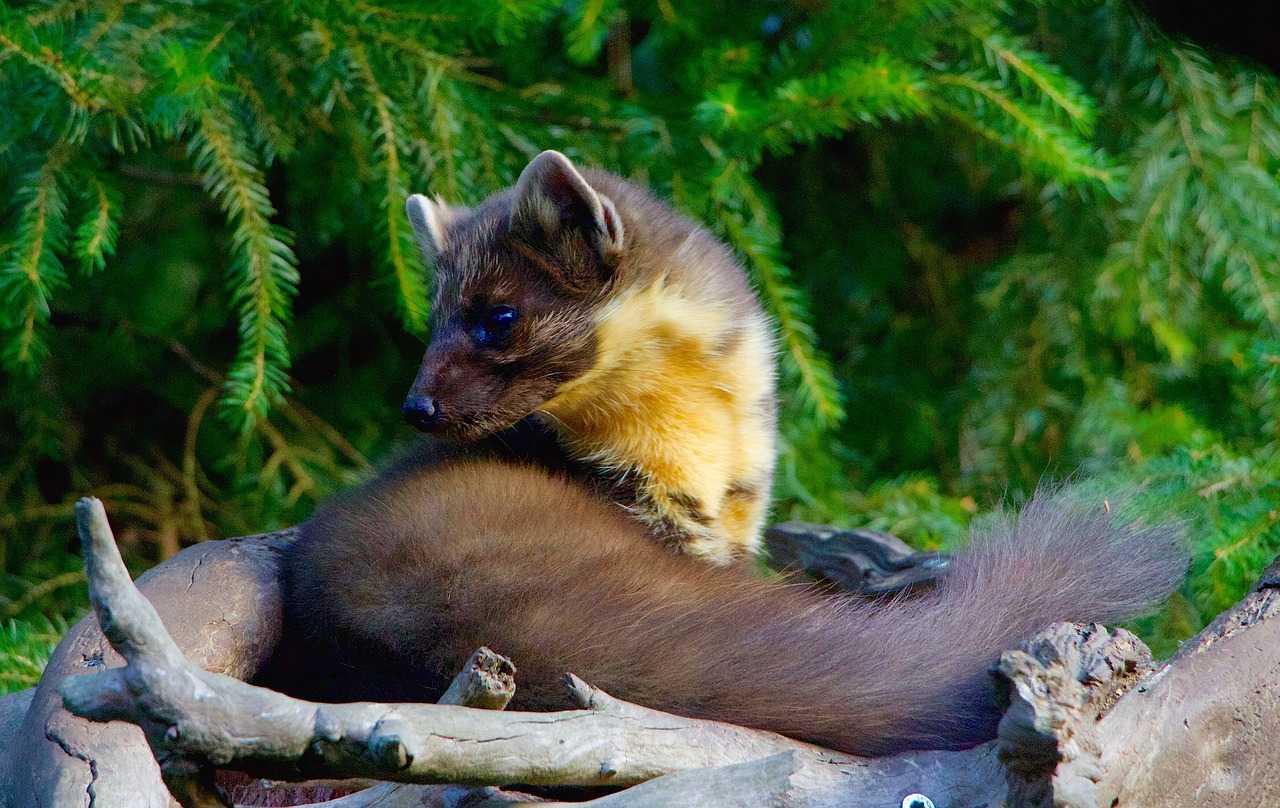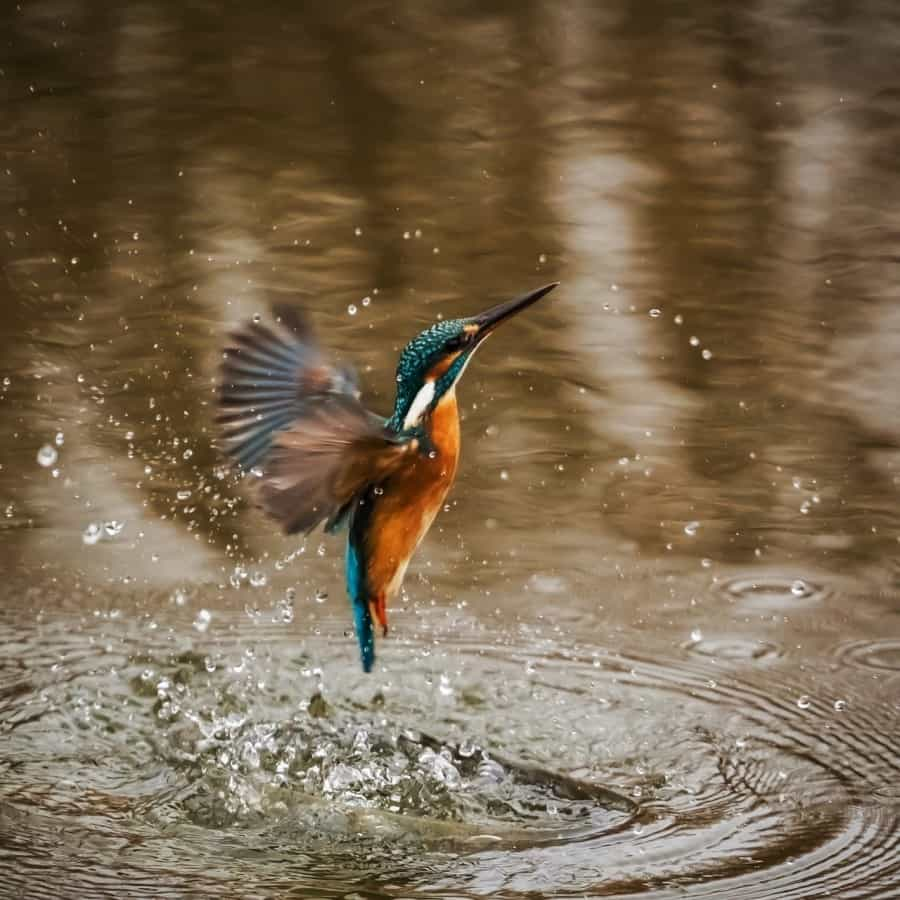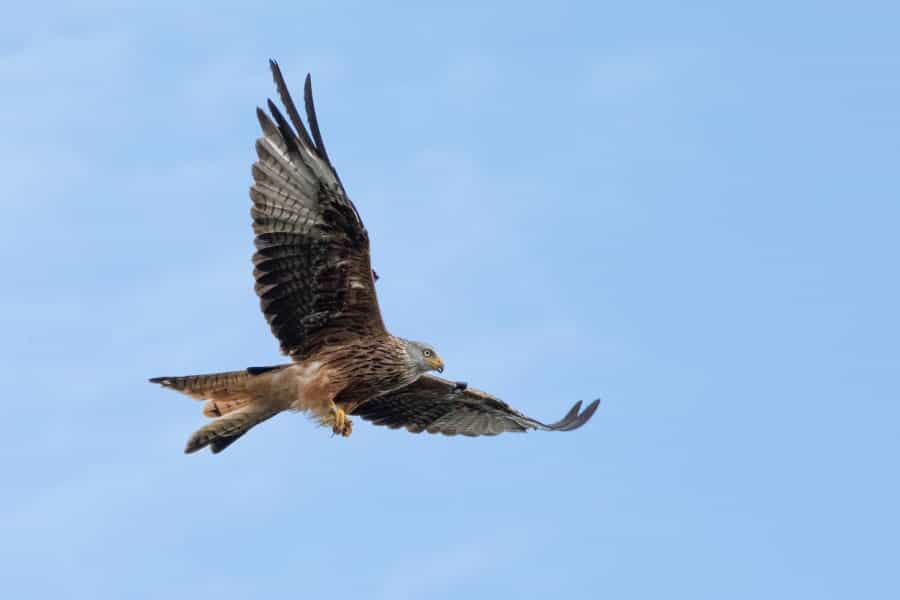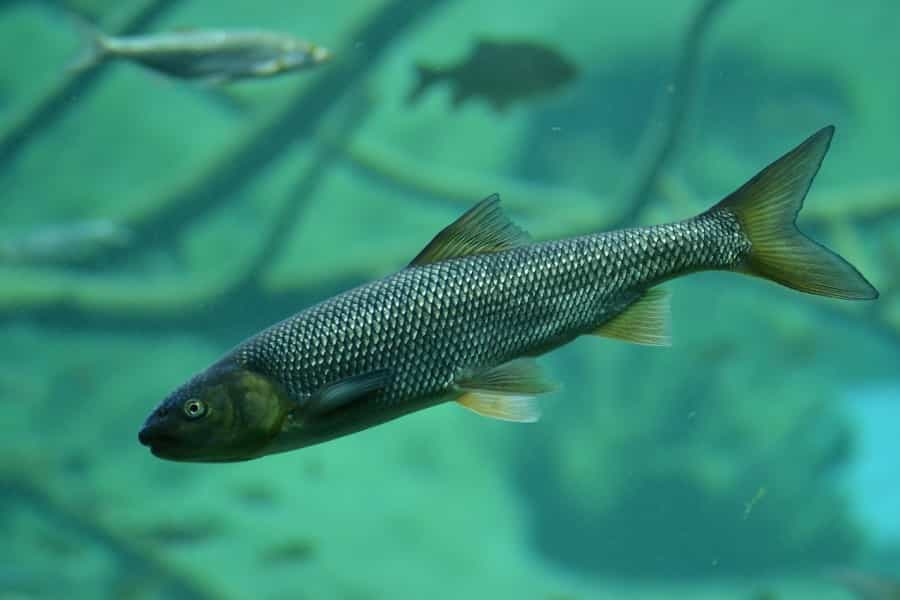Wildlife in Snowdonia National Park

Pack your binoculars and your camera, for Eryri (Snowdonia) National Park is home to a wildlife as diverse and exciting as its dramatic scenery, ranging from rocky mountain ridges to ancient woodland, and heather uplands right down to sheltered bays along its indentured coastline. These dramatic landscapes support birds from ospreys to Manx shearwaters, grazing livestock, wild ponies and goats; they’re also home to tiny rare beetles and even rarer Snowdon lilies.
Pitchup has done all the heavy lifting and produced the definitive guide to where and when you can best spot wildlife in Eryri/Snowdonia (although of course, when dealing with animals, this is never an exact science), how to do so responsibly and how to join the battle to preserve and conserve this most precious of environments.
Diverse habitats in Snowdonia
The land- and seascapes of Eryri encompass a variety of wildlife habitats in an area covering roughly 823 square miles. Fed by mild, damp weather coming in from the Atlantic Ocean, this region supports thousands of plant and animal species.
Mountainous regions
The towering high-altitude crags, scree slopes and famous mountains are a magnet for millions of visitors each year, but these landscapes are equally important as a home for wildlife that has adapted to the harsh conditions over centuries. Wild ponies and goats graze the lower slopes, which are strewn with alpine plants like purple saxifrage in spring. Birds of prey soar above the mountains, while red-billed choughs and ring ouzels breed in steep-sided valleys.
Woodlands and forests
Ancient forests packed full of native trees like oak, beech and sycamore have been victim of ash dieback and Dutch elm disease but are carefully managed for damage limitation. They support a number of birds that nest in trees including owls, woodpeckers and cuckoos, while smaller mammals like red squirrels, badgers and wood mice scurry around under the protection of the tree canopy. Newts and frogs breed in woodland ponds in spring, when bluebells carpet the forest floor.
Coastal areas
Often unheralded in comparison with its inland charms, the national park actually has an extensive coastline serving up mountain-backed dunes bound by marram grass, sandy beaches and river estuaries like the Mawddach and Dyfi. The seas are rich in cetaceans, and you can inspire your kids with an interest in nature by rockpooling for crabs and mussels at low tide.
Lakes and rivers
Tranquil lakes are fed by tumbling rivers and spectacular waterfalls (and more than 157 inches of rain per year). Kingfishers, herons and orange-beaked oystercatchers stalk shorelines looking for insects and small fish – brown trout are abundant – while otters hunt along river banks. The park’s largest natural lake is Llyn Tegid, the sole surviving habitat of the gwyniad, a small fish trapped in the lake during the Ice Age.

Key animals to watch for in Snowdonia
Eryri’s distinct regions support some unusual wildlife species; whether you will see them can never be guaranteed, but patience will hopefully pay off.
Birds of prey
Around 20 species of raptor have been seen or are breeding in Eryri/Snowdonia National Park. These range from red kites and buzzards to much rarer golden eagles (sightings are controversial), ospreys and peregrine falcons. Merlins, kestrels and hen harriers are also present in significant numbers. For a good chance of catching these magnificent avians in the air, head for the lower slopes of Yr Wyddfa (Snowdon), where they nest on ledges and rock faces.

Insects and invertebrates
Extremely rare rainbow leaf beetles are only found on the slopes of Yr Wyddfa; they are easier to spot when it’s sunny as the light reflects off their brightly coloured carapaces. Carefully managed wildflower meadows are feeding grounds for a host of butterflies; look for marsh fritillaries in fields scattered along the Nant Ffrancon valley floor.
Mammals
Feral mountain goats roam freely across the Glyders, the slopes of Craig Yr Aderyn and around the sparkling waters of Llyn Cau on Cadair Idris. With origins possibly dating back to the Bronze Age, a herd of long-maned shaggy Carneddau ponies ranges over several miles of rough terrain near Bethesda and Llanfairfechan.
Along with endangered red squirrels, cute little pine martens have been reintroduced in North Wales; you might see them after dark in woodland areas like Dolmelynllyn on a National Trust-owned estate. Shy otters can occasionally be spotted at dawn or dusk along the banks of the rivers Artro, Dwyfor and Erch.
Marine animals
Dolphins and harbour porpoises can often be spotted from Snowdonia's beaches; Cardigan Bay is home to several pods that consistently appear close to the shoreline. Grey and common seals can also be spotted basking in the beaches, with Angel Bay (just outside the park) having a healthy colony of grey seals.
Good to know: If all else fails and the kids haven’t seen their favourite animal in the wild, they can get their fix at the Welsh Mountain Zoo, just outside Snowdonia at Colwyn Bay.

Best spots for wildlife photography in Eryri
Keen to capture that iconic shot of Snowdonia’s wild Carneddau ponies? Head for the Ogwen Valley to spot them (hopefully!) grazing the Carneddau uplands. If you’re a birder, set up at the hide run by Bywyd Gwyllt Glaslyn Wildlife in the Glaslyn Valley to snap the ospreys that breed there, or try your luck at the hide in Spinnies Aberogwen Nature Reserve – you can often catch a glimpse of kingfishers from there.
Good to know: Taking guided tours by expert photographers familiar with all the best spots for viewing wildlife will up your chances of success. Search online for ‘wildlife photographers in Eryri’ and you’ll turn up several options.
Tips for responsible Snowdonia wildlife watching
Visitors to all the UK’s national parks have a responsibility to protect the landscapes they enjoy. For your own sake, and that of the animals, please keep the following guidelines in mind when viewing wildlife in Eryri National Park.
-
Always follow the Countryside Code.
-
Park sensibly – do not park across field gates, public tracks or on the verge on narrow country lanes. Likewise, never block emergency vehicle access.
-
Use public transport wherever possible. There are good bus routes between the main towns within Snowdonia, as well as some park-and-ride services.
-
If you are keen to photograph the wildlife, keep your distance and get your close up only via a long lens.
-
Leave no trace of your presence. Take all your litter home with you, and do not pick wildflowers or plants.
-
Ensure dogs are kept on leads around wildlife and grazing livestock.
-
Do not disturb ground-nesting birds between March and July as the young may be abandoned and will die.
-
Use a designated campsite or always seek permission from landowners before wild camping in their land. If you’re not sure about the rules wild camping protocol, read Pitchup’s wild camping guide to find out how to do it legally and safely.
Conservation efforts in Snowdonia
Eryri National Park is very special indeed. There are 17 National Nature Reserves and 56 Sites of Special Scientific Interest within its boundaries, and they all need looking after. Here’s what you can do to help protect the park for future generations.
Offer your time as a volunteer
There are volunteer opportunities across Snowdonia, including helping to eradicate invasive species (like Himalayan balsam, Japanese knotweed and rhododendrons), picking up litter or helping to restore paths and trails worn down by sheer visitor numbers.
Join the Snowdonia Society
A conservation charity dedicated to conserving Eryri’s dramatic landscapes, the Snowdonia Society runs projects to clean beaches, counteract over-tourism and maintain footpaths.
Become an Eryri Ambassador
More than 600 people are now qualified as Eryri National Park Ambassadors and contribute to the protection of the park; you’ll need to follow an online training course and qualify to help in roles such as land management and sustainable tourism.
Planning your Snowdonia wildlife trip
If you’re not venturing into the mountains, chances are you won’t need any specialist gear beyond waterproof layers of clothing and sturdy comfortable boots. However, always take the right equipment when planning long hikes in search of elusive wildlife; the weather can change rapidly, especially in the upland areas of the park. Basic safety measures include:
-
Always carrying a map or compass
-
Checking the weather conditions: AccuWeather is a reliable app
-
Taking extra layers of waterproof or thermal clothing
-
Having a fully charged phone with you
-
Packing plenty of food and drink (hot or cold according to time of year)
-
Carrying a simple first-aid kit
Good to know: Considering how over-crowded the park can get in summer and over holiday weekends, there is a very useful app that gives real-time information on parking in Eryri.
Increase your chances of spotting Snowdonia’s outstanding wildlife by staying outdoors: Pitchup has a variety of camping options in the national park, from simple nearly-wild campsites to family-friendly caravan sites with lots of extras to keep the kids cheerful. We also have guides dedicated to the various activities you can do in Eryri, including hiking and mountain biking.